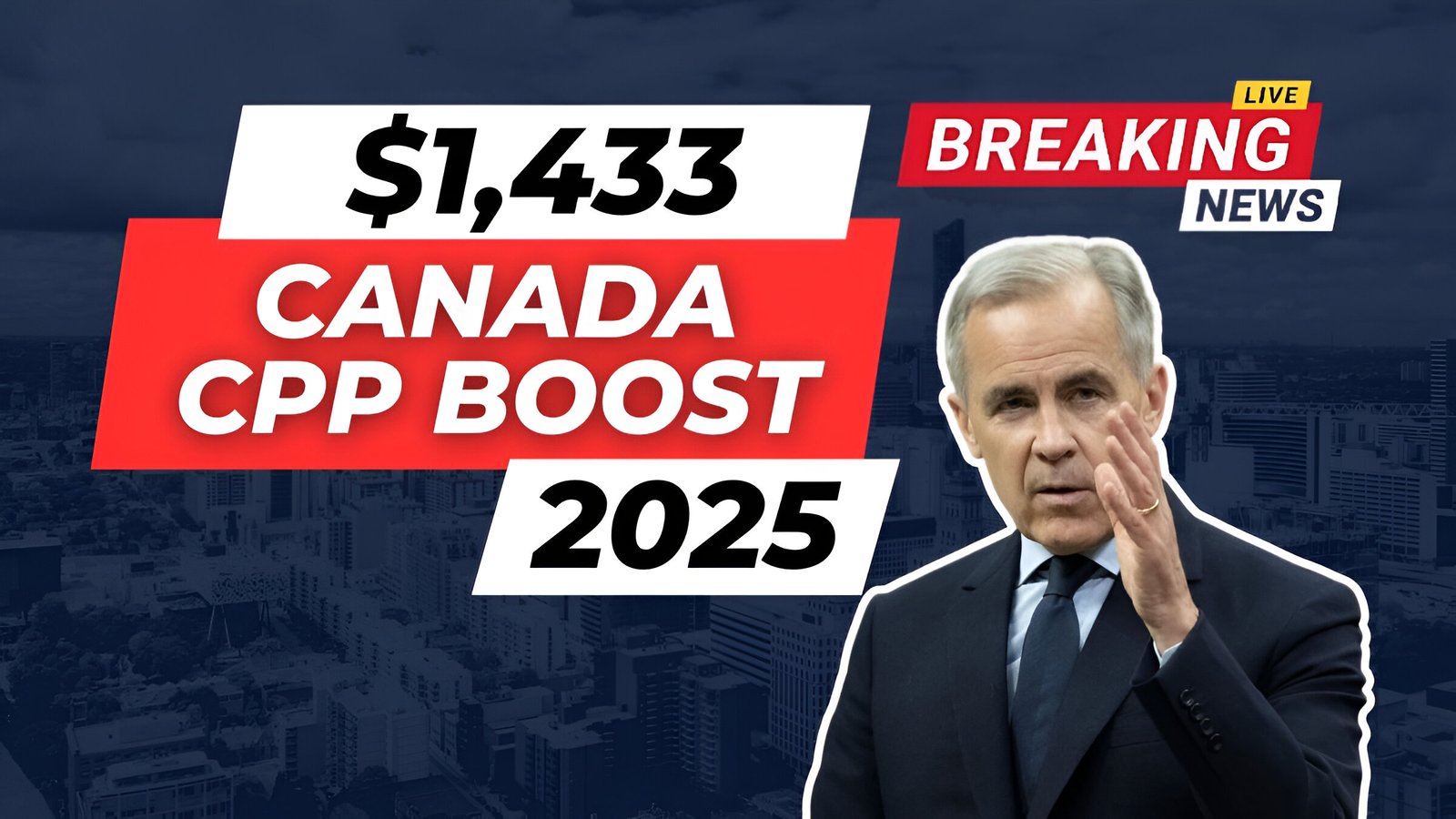Canada CPP Boost 2025: The Canada Pension Plan (CPP) is a vital retirement plan for the citizens of the country, providing pension security based on the earnings and contributions made during the working life. This plan is specially designed for those who want a stable income after retirement. Contributing to the CPP is not only a social security investment, but it is also a way to avoid future economic crises.
Every year, the government revises the amount of CPP payments to balance inflation and the rising cost of living. In 2025, the CPP has received a big boost—eligible beneficiaries can now receive a maximum monthly pension of $1,433. This is a relief news not only for current retirees but also for those who will retire in the future.
CPP Boost in 2025: Why did this change happen?
The main reason for the increase in CPP payments in 2025 is the full effect of the Enhanced CPP (ECPP) plan. The plan was launched in 2019 and was intended to gradually increase CPP benefits so that citizens can get more financial support after retirement. This year, the fourth and final phase of the plan is being implemented.
The second reason is inflation. The cost of living in Canada has increased significantly in the past few years—especially rent, health care and food items have become expensive. In such a situation, the government has increased the CPP benefit based on the Cost of Living Adjustment (COLA).
Maximum $1,433 pension: Who will get it and how?
In 2025, eligible citizens who started taking CPP at the age of 65 with full contributions can receive a maximum monthly benefit of $1,433. It is important to note that this maximum amount is not available to everyone—it is only available to those who:
- Have regularly contributed to CPP for at least 39 years.
- Have earned the average or maximum limit.
- Started taking CPP benefits at age 65 (the amount may increase or decrease if you start earlier or later).
If someone defers taking CPP benefits until age 70, they can get an additional 8.4% each year. On the other hand, if someone starts taking benefits at age 60, they will get a lesser amount.
Eligibility Criteria: Who can be a beneficiary?
There are some basic conditions you need to meet to receive a CPP pension:
- Age – You must be at least 60 years old to receive benefits, but 65 is considered ideal to receive a full pension.
- Contributions – You must have contributed to the Canada Pension Plan for at least one year. The more and longer the contribution, the greater the benefit.
- Residential Status – You must be a Canadian citizen or permanent resident, but if you have worked in Canada and contributed to the CPP, you may be eligible even if you are outside the country.
- Earnings status – Your total earnings and the CPP contributions you make also determine how much you will receive.
Payment date: When will you receive CPP in 2025?
CPP pension payments are made monthly and are usually received in the last week of the month. Possible payment dates for 2025 may be as follows (although these may be updated by the government from time to time):
| Month | Expected Payment Date |
|---|---|
| January 2025 | 29 January |
| February 2025 | 26 February |
| March 2025 | 27 March |
| April 2025 | 26 April |
| May 2025 | 29 May |
| June 2025 | 26 June |
Payments by direct deposit into a bank account are usually received the same day, while those received by check may take a few additional days.
How to receive CPP payments?
If you want to receive CPP benefits in 2025, the application process is very simple:
- Online application: The best option is to apply online through My Service Canada Account. This method is fast, secure and convenient.
- Paper form: If you don’t want to go online, you can download the CPP pension application form, fill it out and send it to your nearest Service Canada center.
After applying, the process is usually completed in 1 to 2 months.
What is the difference between CPP and OAS?
People often get confused about CPP and OAS (Old Age Security). Let’s know the difference between these two:
- CPP is based on your earnings and contributions. The higher the earnings, the higher the benefits.
- OAS is a social security benefit that is given to citizens who are 65 years or older and have lived in Canada for at least 10 years. It is not necessary to work or contribute for this.
If you are eligible for both schemes, you can get the benefit of OAS along with CPP.
Impact of CPP changes on common citizens
The CPP increase of 2025 is a relief for millions of citizens who were earlier immersed in financial anxiety after retirement. Now with a monthly pension of $1,433, they will not only be able to meet their essential expenses but will also feel mentally assured.
Financial independence in old age is linked to self-esteem. A stable pension payment not only helps maintain personal dignity but also pays for health care, medications and daily needs.
Conclusion: Prepare now for CPP in 2025
If you plan to receive CPP benefits in the next few years, now is the time to review your preparations. Make sure all your contributions are complete, your My Service Canada Account is up to date, and you begin receiving benefits at the right age.
The CPP 2025 increase is not only financially beneficial, but it is also a strong step towards respect and a secure life for older adults in Canadian society.
FAQs
Q. What is the maximum CPP payment in 2025?
A. The maximum monthly CPP payment in 2025 is $1,433 for eligible retirees.
Q. When will CPP payments be made in 2025?
A. CPP payments are issued monthly, typically during the last week of each month.
Q. Who qualifies for the full CPP amount?
A. Those who contributed the maximum amount to CPP for 39+ years and start at age 65.
Q. Can I apply for CPP online?
A. Yes, you can apply through your My Service Canada Account.
Q. Is CPP different from OAS?
A. Yes, CPP is based on work contributions; OAS is a residence-based benefit.








